Pediatric NIH Stroke Scale: Assessing Children's Stroke Risk

Discover how the Pediatric NIH Stroke Scale optimizes assessment & management for children's stroke cases. Enhance clinical outcomes with this essential tool.
In the realm of pediatric healthcare, the NIH Stroke Scale (NIHSS) serves as a critical tool for assessing and managing stroke cases in children. Despite strokes being relatively rare in pediatric populations, their impact can be profound and necessitates swift and accurate evaluation. The Pediatric NIH Stroke Scale (PedNIHSS) emerges as a pivotal instrument tailored to the unique physiological and developmental nuances of young patients. Through a comprehensive examination of neurological deficits, this scale enables healthcare professionals to promptly identify and address stroke-related impairments in children. This article elucidates the significance of the PedNIHSS within the context of pediatric stroke care, highlighting its role in optimizing clinical outcomes and guiding therapeutic interventions.
Top 10 Points about Pediatric NIH Stroke Scale :
- Understanding the ABCs of Pediatric NIH Stroke Scale
- A Journey into the World of Pediatric Stroke Assessment
- Unlocking the Mysteries: How the Pediatric NIH Stroke Scale Works
- The Art of Navigating Pediatric Stroke Assessment: A Guide
- Demystifying the Pediatric NIH Stroke Scale: What You Need to Know
- Scaling Down: Pediatric NIH Stroke Scale Explained
- From A to Z: Pediatric Stroke Assessment with NIH Scale
- Cracking the Code: Deciphering Pediatric Stroke Assessment
- Mastering Pediatric Stroke Evaluation with NIH Scale
- Exploring the Pediatric NIH Stroke Scale: Tips and Tricks
Several facts about Pediatric NIH Stroke Scale
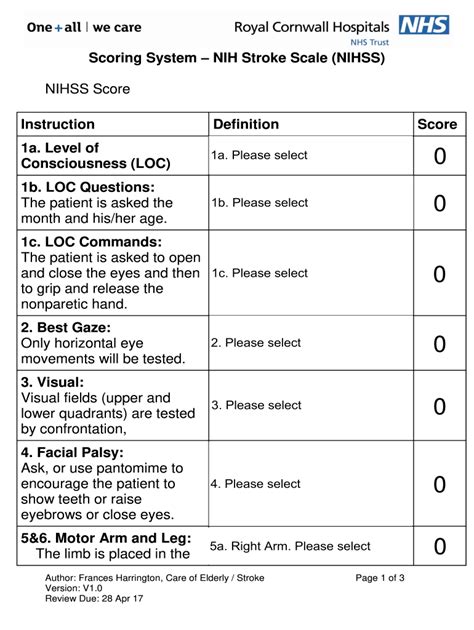
Understanding the Pediatric NIH Stroke Scale
The Pediatric NIH Stroke Scale (PedNIHSS) is a crucial tool in assessing and managing strokes in children. Developed based on the National Institutes of Health Stroke Scale (NIHSS) for adults, the PedNIHSS is specifically tailored to the unique needs and characteristics of pediatric patients.
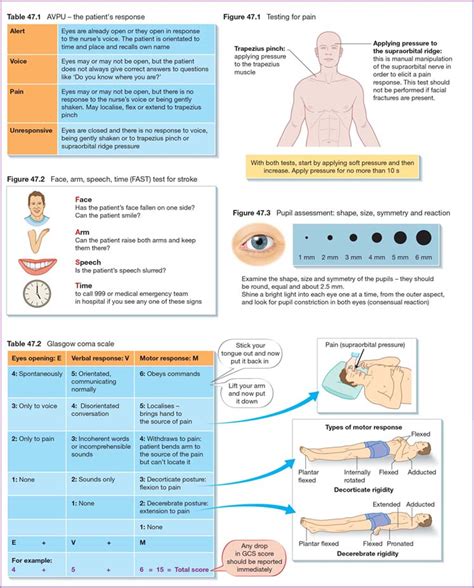
A Comprehensive Guide to Pediatric Stroke Assessment
Assessing strokes in children requires a comprehensive approach due to the differences in presentation and underlying causes compared to adults. The PedNIHSS provides healthcare professionals with a standardized method to evaluate neurological deficits in pediatric patients, aiding in accurate diagnosis and treatment planning.
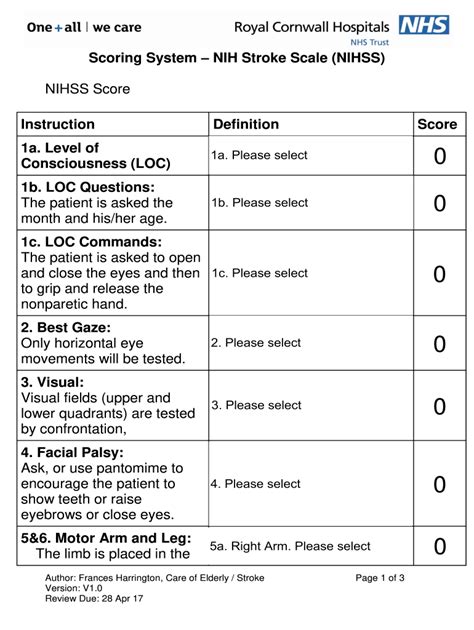
Pediatric NIH Stroke Scale in Action
When a child presents with symptoms suggestive of a stroke, prompt assessment is critical. The PedNIHSS guides clinicians through a series of assessments, including level of consciousness, gaze, visual fields, facial palsy, motor function, limb ataxia, sensory, language, and dysarthria, providing a comprehensive evaluation of the child's neurological status.
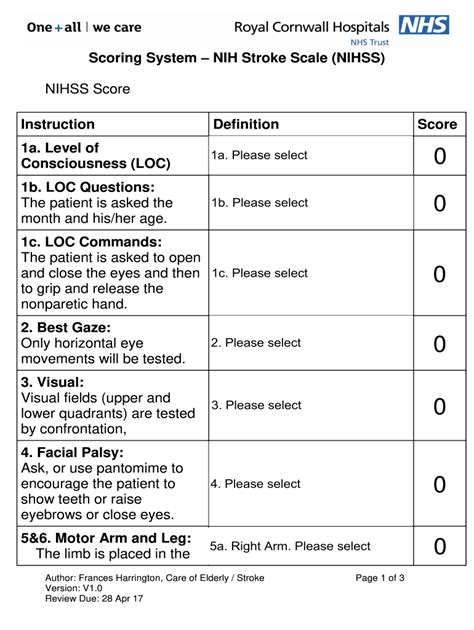
Benefits of Using Pediatric NIH Stroke Scale
Using the PedNIHSS offers several benefits in the management of pediatric stroke cases. It facilitates early recognition of stroke symptoms, enables timely initiation of appropriate interventions, guides monitoring of neurological status over time, and aids in prognostication of outcomes.
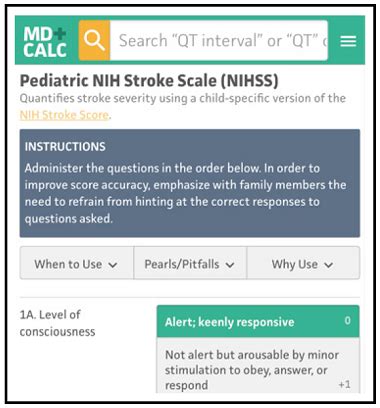
Pediatric Stroke Scale in Clinical Practice
Implementing the PedNIHSS in clinical practice requires familiarity with the scale's administration and interpretation. Healthcare professionals should undergo training to ensure consistency and accuracy in assessing pediatric stroke patients using the PedNIHSS.

Challenges and Considerations in Using Pediatric NIH Stroke Scale
While the PedNIHSS is a valuable tool, its application may pose challenges in certain clinical scenarios. Factors such as age-specific variations in neurological development, pre-existing medical conditions, and limited communication abilities in young children can influence the assessment process and interpretation of results.
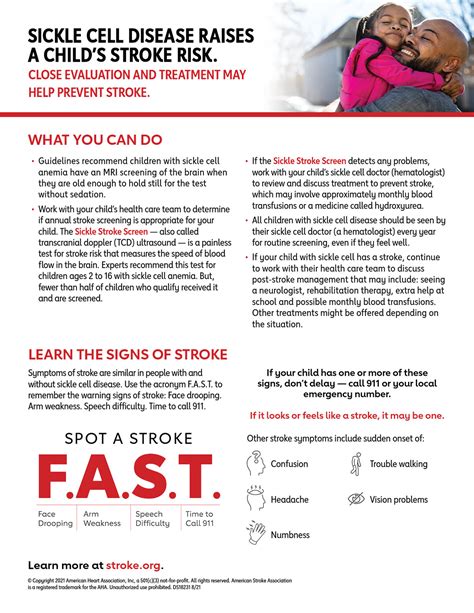
Future Directions for Pediatric Stroke Assessment
As research in pediatric stroke continues to evolve, there is a growing need for further refinement and validation of assessment tools like the PedNIHSS. Future directions may involve the development of age-specific modifications, integration of advanced imaging modalities, and incorporation of biomarkers to enhance diagnostic accuracy and prognostication.
Pediatric NIH Stroke Scale in Professional's eye
The
pediatric NIH Stroke Scale (PedNIHSS) represents a pivotal advancement in pediatric healthcare, particularly in the realm of stroke assessment and management. Developed as an adaptation of the National Institutes of Health Stroke Scale (NIHSS) for adults, the PedNIHSS serves as a standardized tool tailored to the unique needs and characteristics of pediatric patients. Its significance lies in its ability to provide a systematic framework for evaluating neurological deficits in children suspected of experiencing a stroke. Through a series of assessments encompassing various domains such as level of consciousness, motor function, sensory perception, and language skills, the PedNIHSS enables healthcare professionals to accurately gauge the severity of neurological impairment and guide appropriate treatment strategies. This standardized approach not only facilitates early recognition of stroke symptoms but also ensures consistency and objectivity in the assessment process across different healthcare settings. Moreover, the PedNIHSS plays a crucial role in enhancing communication among multidisciplinary teams involved in the care of pediatric stroke patients, fostering collaborative decision-making and optimizing clinical outcomes. Its integration into clinical practice underscores a commitment to delivering evidence-based, patient-centered care in pediatric stroke management, ultimately improving the quality of life for affected children and their families.
Point of Views : Pediatric NIH Stroke Scale
The
pediatric NIH Stroke Scale (PedNIHSS) revolutionizes pediatric healthcare by providing a standardized framework for assessing strokes in children, ensuring consistent and accurate evaluation across diverse clinical settings.Developed as an adaptation of the National Institutes of Health Stroke Scale (NIHSS) for adults, the PedNIHSS addresses the unique physiological and developmental characteristics of pediatric patients, enhancing the precision and efficacy of stroke assessment in this population.Through a series of
comprehensive assessments encompassing various neurological domains such as level of consciousness, motor function, sensory perception, and language skills, the PedNIHSS enables healthcare professionals to promptly identify and evaluate stroke-related deficits in children, facilitating timely intervention and management.The integration of the PedNIHSS into clinical practice fosters
collaborative decision-making among multidisciplinary teams involved in the care of pediatric stroke patients, promoting a holistic approach to treatment and rehabilitation.By providing a standardized tool for assessing pediatric stroke cases, the PedNIHSS not only enhances diagnostic accuracy but also contributes to the development of evidence-based treatment protocols tailored to the unique needs of pediatric patients.The widespread adoption of the PedNIHSS underscores a commitment to
delivering high-quality, patient-centered care in pediatric stroke management, ultimately improving outcomes and quality of life for affected children and their families.
Conclusion :In conclusion, exploring the pediatric NIH Stroke Scale (PedNIHSS) offers valuable insights into the realm of pediatric stroke assessment and management. Through a comprehensive evaluation of neurological deficits in children, the PedNIHSS serves as a crucial tool in facilitating early recognition and intervention for pediatric stroke cases. Its standardized approach ensures consistency and objectivity in the assessment process, enabling healthcare professionals to accurately gauge the severity of neurological impairment and guide appropriate treatment strategies. By integrating the PedNIHSS into clinical practice, healthcare providers demonstrate a commitment to delivering evidence-based, patient-centered care that prioritizes the well-being and outcomes of pediatric stroke patients.
Furthermore, as research in pediatric stroke continues to evolve, the PedNIHSS remains a cornerstone in enhancing diagnostic accuracy and refining treatment protocols tailored to the unique needs of pediatric patients. Its role in promoting collaborative decision-making among multidisciplinary teams underscores the importance of a holistic approach to pediatric stroke management. Moving forward, continued efforts to enhance awareness, education, and implementation of the PedNIHSS are essential in further improving outcomes and quality of life for affected children and their families.
Questions and Answer for Pediatric NIH Stroke Scale
When exploring the pediatric NIH Stroke Scale (PedNIHSS), individuals often have several questions about its application and significance in pediatric healthcare. Here are some commonly asked questions along with their answers:
- 1. What is the purpose of the pediatric NIH Stroke Scale?
The primary purpose of the PedNIHSS is to assess and evaluate neurological deficits in pediatric patients suspected of experiencing a stroke. It provides healthcare professionals with a standardized framework for identifying stroke-related impairments and guiding appropriate treatment interventions.
- 2. How is the pediatric NIH Stroke Scale administered?
The PedNIHSS is administered through a series of assessments that evaluate various neurological domains, including level of consciousness, motor function, sensory perception, and language skills. Healthcare professionals undergo training to ensure consistent and accurate administration of the scale.
- 3. What age group does the pediatric NIH Stroke Scale apply to?
The PedNIHSS is designed for use in pediatric patients, typically ranging from infancy to adolescence. It takes into account the developmental differences and unique characteristics of children, allowing for tailored assessment and management of stroke cases in this population.
- 4. What are the benefits of using the pediatric NIH Stroke Scale?
Using the PedNIHSS offers several benefits, including early recognition of stroke symptoms, timely initiation of treatment, monitoring of neurological status over time, and facilitation of collaborative decision-making among healthcare providers.
Label :Pediatric Stroke, NIH Scale
Keyword : Pediatric NIH Stroke Scale

Discover how the Pediatric NIH Stroke Scale optimizes assessment & management for children's stroke cases. Enhance clinical outcomes with this essential tool.
In the realm of pediatric healthcare, the NIH Stroke Scale (NIHSS) serves as a critical tool for assessing and managing stroke cases in children. Despite strokes being relatively rare in pediatric populations, their impact can be profound and necessitates swift and accurate evaluation. The Pediatric NIH Stroke Scale (PedNIHSS) emerges as a pivotal instrument tailored to the unique physiological and developmental nuances of young patients. Through a comprehensive examination of neurological deficits, this scale enables healthcare professionals to promptly identify and address stroke-related impairments in children. This article elucidates the significance of the PedNIHSS within the context of pediatric stroke care, highlighting its role in optimizing clinical outcomes and guiding therapeutic interventions.
Top 10 Points about Pediatric NIH Stroke Scale :
- Understanding the ABCs of Pediatric NIH Stroke Scale
- A Journey into the World of Pediatric Stroke Assessment
- Unlocking the Mysteries: How the Pediatric NIH Stroke Scale Works
- The Art of Navigating Pediatric Stroke Assessment: A Guide
- Demystifying the Pediatric NIH Stroke Scale: What You Need to Know
- Scaling Down: Pediatric NIH Stroke Scale Explained
- From A to Z: Pediatric Stroke Assessment with NIH Scale
- Cracking the Code: Deciphering Pediatric Stroke Assessment
- Mastering Pediatric Stroke Evaluation with NIH Scale
- Exploring the Pediatric NIH Stroke Scale: Tips and Tricks
Several facts about Pediatric NIH Stroke Scale

Understanding the Pediatric NIH Stroke Scale
The Pediatric NIH Stroke Scale (PedNIHSS) is a crucial tool in assessing and managing strokes in children. Developed based on the National Institutes of Health Stroke Scale (NIHSS) for adults, the PedNIHSS is specifically tailored to the unique needs and characteristics of pediatric patients.

A Comprehensive Guide to Pediatric Stroke Assessment
Assessing strokes in children requires a comprehensive approach due to the differences in presentation and underlying causes compared to adults. The PedNIHSS provides healthcare professionals with a standardized method to evaluate neurological deficits in pediatric patients, aiding in accurate diagnosis and treatment planning.

Pediatric NIH Stroke Scale in Action
When a child presents with symptoms suggestive of a stroke, prompt assessment is critical. The PedNIHSS guides clinicians through a series of assessments, including level of consciousness, gaze, visual fields, facial palsy, motor function, limb ataxia, sensory, language, and dysarthria, providing a comprehensive evaluation of the child's neurological status.

Benefits of Using Pediatric NIH Stroke Scale
Using the PedNIHSS offers several benefits in the management of pediatric stroke cases. It facilitates early recognition of stroke symptoms, enables timely initiation of appropriate interventions, guides monitoring of neurological status over time, and aids in prognostication of outcomes.

Pediatric Stroke Scale in Clinical Practice
Implementing the PedNIHSS in clinical practice requires familiarity with the scale's administration and interpretation. Healthcare professionals should undergo training to ensure consistency and accuracy in assessing pediatric stroke patients using the PedNIHSS.

Challenges and Considerations in Using Pediatric NIH Stroke Scale
While the PedNIHSS is a valuable tool, its application may pose challenges in certain clinical scenarios. Factors such as age-specific variations in neurological development, pre-existing medical conditions, and limited communication abilities in young children can influence the assessment process and interpretation of results.

Future Directions for Pediatric Stroke Assessment
As research in pediatric stroke continues to evolve, there is a growing need for further refinement and validation of assessment tools like the PedNIHSS. Future directions may involve the development of age-specific modifications, integration of advanced imaging modalities, and incorporation of biomarkers to enhance diagnostic accuracy and prognostication.
Pediatric NIH Stroke Scale in Professional's eye
The
pediatric NIH Stroke Scale (PedNIHSS) represents a pivotal advancement in pediatric healthcare, particularly in the realm of stroke assessment and management. Developed as an adaptation of the National Institutes of Health Stroke Scale (NIHSS) for adults, the PedNIHSS serves as a standardized tool tailored to the unique needs and characteristics of pediatric patients. Its significance lies in its ability to provide a systematic framework for evaluating neurological deficits in children suspected of experiencing a stroke. Through a series of assessments encompassing various domains such as level of consciousness, motor function, sensory perception, and language skills, the PedNIHSS enables healthcare professionals to accurately gauge the severity of neurological impairment and guide appropriate treatment strategies. This standardized approach not only facilitates early recognition of stroke symptoms but also ensures consistency and objectivity in the assessment process across different healthcare settings. Moreover, the PedNIHSS plays a crucial role in enhancing communication among multidisciplinary teams involved in the care of pediatric stroke patients, fostering collaborative decision-making and optimizing clinical outcomes. Its integration into clinical practice underscores a commitment to delivering evidence-based, patient-centered care in pediatric stroke management, ultimately improving the quality of life for affected children and their families.
Point of Views : Pediatric NIH Stroke Scale
The
pediatric NIH Stroke Scale (PedNIHSS) revolutionizes pediatric healthcare by providing a standardized framework for assessing strokes in children, ensuring consistent and accurate evaluation across diverse clinical settings.Developed as an adaptation of the National Institutes of Health Stroke Scale (NIHSS) for adults, the PedNIHSS addresses the unique physiological and developmental characteristics of pediatric patients, enhancing the precision and efficacy of stroke assessment in this population.Through a series of
comprehensive assessments encompassing various neurological domains such as level of consciousness, motor function, sensory perception, and language skills, the PedNIHSS enables healthcare professionals to promptly identify and evaluate stroke-related deficits in children, facilitating timely intervention and management.The integration of the PedNIHSS into clinical practice fosters
collaborative decision-making among multidisciplinary teams involved in the care of pediatric stroke patients, promoting a holistic approach to treatment and rehabilitation.By providing a standardized tool for assessing pediatric stroke cases, the PedNIHSS not only enhances diagnostic accuracy but also contributes to the development of evidence-based treatment protocols tailored to the unique needs of pediatric patients.The widespread adoption of the PedNIHSS underscores a commitment to
delivering high-quality, patient-centered care in pediatric stroke management, ultimately improving outcomes and quality of life for affected children and their families.
Conclusion :In conclusion, exploring the pediatric NIH Stroke Scale (PedNIHSS) offers valuable insights into the realm of pediatric stroke assessment and management. Through a comprehensive evaluation of neurological deficits in children, the PedNIHSS serves as a crucial tool in facilitating early recognition and intervention for pediatric stroke cases. Its standardized approach ensures consistency and objectivity in the assessment process, enabling healthcare professionals to accurately gauge the severity of neurological impairment and guide appropriate treatment strategies. By integrating the PedNIHSS into clinical practice, healthcare providers demonstrate a commitment to delivering evidence-based, patient-centered care that prioritizes the well-being and outcomes of pediatric stroke patients.
Furthermore, as research in pediatric stroke continues to evolve, the PedNIHSS remains a cornerstone in enhancing diagnostic accuracy and refining treatment protocols tailored to the unique needs of pediatric patients. Its role in promoting collaborative decision-making among multidisciplinary teams underscores the importance of a holistic approach to pediatric stroke management. Moving forward, continued efforts to enhance awareness, education, and implementation of the PedNIHSS are essential in further improving outcomes and quality of life for affected children and their families.
Questions and Answer for Pediatric NIH Stroke Scale
When exploring the pediatric NIH Stroke Scale (PedNIHSS), individuals often have several questions about its application and significance in pediatric healthcare. Here are some commonly asked questions along with their answers:
- 1. What is the purpose of the pediatric NIH Stroke Scale?
The primary purpose of the PedNIHSS is to assess and evaluate neurological deficits in pediatric patients suspected of experiencing a stroke. It provides healthcare professionals with a standardized framework for identifying stroke-related impairments and guiding appropriate treatment interventions.
- 2. How is the pediatric NIH Stroke Scale administered?
The PedNIHSS is administered through a series of assessments that evaluate various neurological domains, including level of consciousness, motor function, sensory perception, and language skills. Healthcare professionals undergo training to ensure consistent and accurate administration of the scale.
- 3. What age group does the pediatric NIH Stroke Scale apply to?
The PedNIHSS is designed for use in pediatric patients, typically ranging from infancy to adolescence. It takes into account the developmental differences and unique characteristics of children, allowing for tailored assessment and management of stroke cases in this population.
- 4. What are the benefits of using the pediatric NIH Stroke Scale?
Using the PedNIHSS offers several benefits, including early recognition of stroke symptoms, timely initiation of treatment, monitoring of neurological status over time, and facilitation of collaborative decision-making among healthcare providers.
Label :Pediatric Stroke, NIH Scale
Keyword : Pediatric NIH Stroke Scale
0 komentar